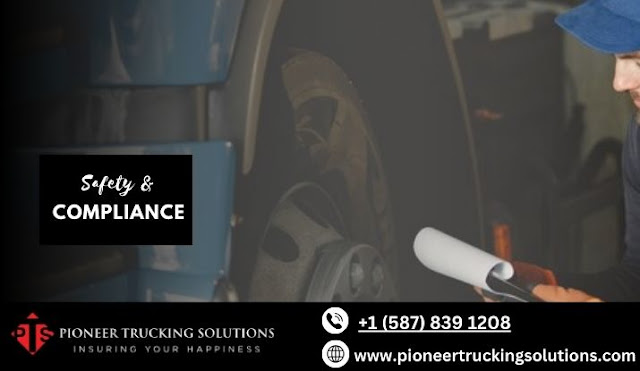Ways For Improving Commercial Vehicle Safety & Compliance On Road
Our economy depends heavily on the movement of products and services across the nation, which is accomplished by commercial vehicles. However, ensuring the safety & compliance of these vehicles is of utmost importance to protect both drivers and other road users.
For that, we are here with this blog through which truckers will get to know about effective ways to enhance the safety of commercial vehicles on the road. By implementing these measures, companies can promote a culture of safety, reduce accidents, and maintain regulatory compliance.
Regular Vehicle Inspections: Perform routine inspections of commercial vehicles to identify any mechanical issues or maintenance requirements. This includes checking tires, brakes, lights, signals, and other critical components. Addressing these issues promptly can prevent breakdowns and accidents on the road.
Driver Training and Education: Invest in comprehensive driver training programs that cover safe driving practices, defensive driving techniques, and compliance with traffic laws. Regularly update drivers on new regulations and industry best practices to ensure they are well-informed and equipped to handle various situations on the road.
Implement a Fatigue Management Program: Fatigue is a significant risk factor for accidents involving commercial vehicles. Establish and enforce a fatigue management program that includes proper scheduling, rest breaks, and limits on driving hours. Encourage drivers to prioritize their well-being and report any signs of fatigue promptly.
Install Safety Technologies: Equip commercial vehicles with advanced safety technologies such as collision warning systems, lane departure warning systems, and blind spot detection. These technologies can help drivers avoid accidents and provide an extra layer of protection on the road.
Enforce Speed Limits: Set and enforce speed limits for commercial vehicles to ensure they are operating within safe limits. Speeding significantly increases the risk of accidents and reduces the driver's ability to react to unexpected situations. Regularly monitor and address any instances of speeding.
Implement Electronic Logging Devices (ELDs): Use ELDs to accurately record and monitor drivers' hours of service (HOS) to ensure compliance with regulations. ELDs help prevent driver fatigue by tracking driving hours and enforcing mandatory rest periods.
Promote a Culture of Safety: Foster a culture of safety within your organization by encouraging open communication, reporting safety concerns, and rewarding safe driving practices. Regularly conduct safety meetings and provide ongoing training to reinforce the importance of safety on the road.
Maintain Appropriate Records: Preserve precise and current documentation of vehicle maintenance, inspections, driver education, and regulatory compliance. When it comes to proving compliance in audits and inspections, this paperwork is crucial.
Conclusion
Enhancing the safety & compliance of commercial vehicles on the road is a shared responsibility among companies, drivers, and regulatory bodies. So, if you are looking to know more about this, then you should get in touch with Pioneer Trucking Solutions right away.



.jpg)
Comments
Post a Comment